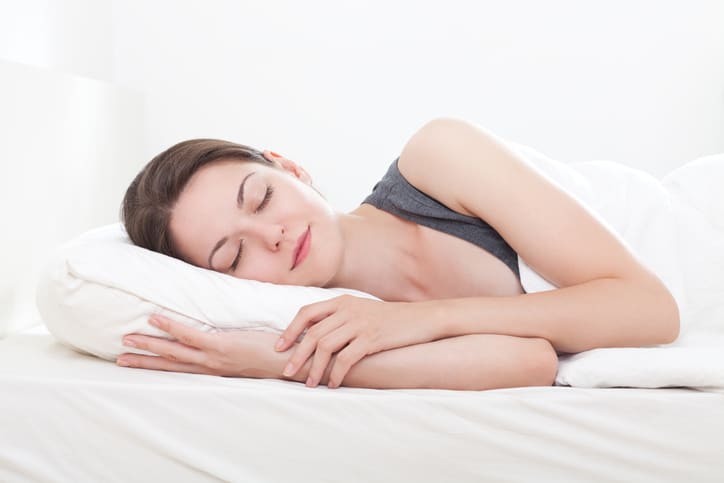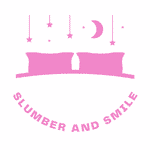You probably heard all kinds of sleep-related advice. “Get your eight hours,” “don’t drink caffeine before bed,” “maintain a regular sleep schedule.” But have you ever considered the impact of your sleeping position, particularly side sleeping, on your face shape? It sounds unusual, doesn’t it? And yet, it’s a topic that’s fascinating and worth discussing.
Understanding Face Shapes
Our faces are incredibly unique. They are like fingerprints that differentiate us from every other person on the planet. The facial features we’re born with are influenced by a variety of factors—genetics, age, and even lifestyle. Yes, your face shape might change subtly as you age or if you quit smoking, lose weight, or make other significant lifestyle adjustments.
The Science of Sleep
Now, let’s talk about sleep—the body’s time for rest, repair, and rejuvenation. When you sleep, your body experiences a series of stages, each with its own unique functions and importance. But sleep isn’t just about closing your eyes and drifting off to dreamland. The position in which you sleep can significantly influence your health and well-being.
Many sleeping positions exist, each with its pros and cons. You might prefer sleeping on your back, on your stomach, or on your side (such as in the freefaller sleep position). But here’s the question that brings us together today: Does the position in which you sleep, particularly side sleeping, affect your face shape?

Side Sleeping and Face Shape: Delving Deeper
You might be a devout side sleeper, snuggling into your pillow and drifting off into comfortable slumber every night unconsciously. However, have you ever woken up with lines etched onto your face from your pillow? These are sleep wrinkles, and their relationship with your sleeping position is more profound than you might think.
Impact on Facial Structure
The act of side sleeping can exert mechanical pressure on your facial tissue. Over time, this sustained pressure could potentially alter your facial structure by causing facial muscles to develop differently. And it’s not just about pressure. The facial distortion created by your pillow might also play a role.
Flattening Cheekbones and Facial Asymmetry
Have you ever considered whether sleeping on your side could flatten your cheekbones or lead to facial asymmetry? Well, it’s a valid consideration. Given that half your face is practically buried in a pillow when you sleep on your side, it’s not a leap to imagine the potential distortion. Whether you favor your left side or roll to the right, the continuous pressure on that side might contribute to subtle shifts in your facial symmetry over time.
However, it’s important to note that facial asymmetry is common and natural, and it might be influenced by several factors beyond sleeping positions.
In particular, facial asymmetry is generally caused by either genetics or by dental differences on the two sides of the jaw.
The Saga of Sleep Wrinkles
The story of sleep wrinkles is one that merits its own chapter. These are wrinkles that form due to the repetitive, nightly pressure your face experiences against your pillow. Over time, this repetition combined with the skin’s decreased elasticity as we age, can lead to wrinkles that may not disappear when you rise and shine.
Read also: How to get rid of sleep lines.
Patterns of Sleep Wrinkles
The patterns of sleep wrinkles are closely tied to your preferred sleep position. The shear forces applied to your skin by your pillow can lead to distinct lines and folds, forming a “map” that could hint at whether you’re a back sleeper, a stomach sleeper, or a side sleeper.
Sleep Wrinkles vs. Expression Wrinkles
Sleep wrinkles should not be confused with expression wrinkles. Expression wrinkles form from the habitual muscle contractions we make as we express ourselves—think laugh lines or frown lines. In contrast, sleep wrinkles form from the mechanical compression, shear forces, and distortion your skin undergoes during sleep.
The Sleep Wrinkle and Side Sleeping Connection
Given that side sleeping places half of your face in contact with a pillow for hours at a time, it can lead to more pronounced sleep wrinkles on one side of your face. The wrinkles tend to appear along the areas of skin that are most distorted during sleep. This continuous distortion could potentially reinforce facial expression lines over time.
Side Sleeping and Skin Health
Beyond face shape and wrinkles, side sleeping could also have other impacts on your skin health. Here’s what you should know:
Impact of Sleep Position on Facial Skin
Sleeping on your side or stomach (the lateral and prone positions) means one side of your face is in constant contact with your pillow. This can cause mechanical stretching and compression of the skin, which over a long period, could contribute to the formation of wrinkles.
Skin Issues from Side Sleeping
Aside from wrinkles, there are other skin health issues that can arise from side sleeping. Think about it – your face is pressed against a pillow that might be home to bacteria, dust mites, and all sorts of tiny particles that you’d rather not have close contact with. This could lead to acne breakouts or skin irritation, particularly for those with sensitive skin.
Sleep Position and Aging
Your preferred sleep position might influence the aging process of your skin. Side sleeping can cause creases on your cheeks and chin, while sleeping on your stomach can lead to a furrowed brow. Over time, these sleep wrinkle patterns might become a permanent part of your landscape, subtly influencing how your skin ages.
Consciously Changing Sleep Patterns
A conscious decision to change sleep patterns can play a significant role in skin health and appearance. Adopting the supine position—yes, that’s a fancy way of saying sleeping on your back—can be one of the effective ways to minimize sleep wrinkles.
Why on your Back Might be the Best Sleeping Position
Sleeping on your back, or in the supine position, can help limit facial distortion by reducing the amount of contact and pressure your face has with your pillow. Not only could this decrease sleep wrinkles, but it could also be beneficial for your overall skin health.
The position might take some getting used to, but your skin will thank you. And don’t worry, there are several specialty pillows available on the market designed to make back sleeping more comfortable.
However, you may need to use pillows around your body, such as a ‘boyfriend pillow’ to keep in the same position throughout the night, as research has shown that we tend to change positions regularly during sleep.
You may also be wondering if sleeping on your back flattens your butt – answer here.
Advice for Side Sleepers: Tips and Tricks to Minimize Impacts
If the idea of switching from side sleeping to back sleeping is too daunting, or you’ve tried but your body just prefers the side, here are some strategies that can help minimize the potential impacts on your face shape and skin health:
Specialty Pillows
Consider investing in specialty pillows designed to reduce pressure on your face. These pillows often have unique shapes or are made from specific materials that can minimize sleep wrinkles.
Silk or satin pillowcases are great for your skin, as they do not cause additional friction in the same way that cotton pillowcases do.
Read also: Do silk pillowcases make you sweat?
Skin Care Regimen
Topical skin care can play a significant role in maintaining your skin health. Moisturizers can help maintain your skin’s natural moisture barrier, while retinoids can promote collagen production, both helping to minimize the appearance of wrinkles.
Healthy Lifestyle
A healthy lifestyle is also key. Regular exercise, a balanced diet to optimize nutrition, and adequate hydration can all contribute to better skin health.
Avoiding Certain Habits
Certain habits such as smoking can exacerbate the formation of wrinkles. Making a conscious effort to quit smoking can significantly improve the quality of your skin.
Professional Advice
While it’s clear that sleeping positions can impact facial skin health, it’s essential to discuss these concerns with a professional, particularly if you’re considering more intensive measures.
The Role of Aesthetic Plastic Surgery
Aesthetic plastic surgery can offer solutions for those seeking to change their face shape or reduce the appearance of wrinkles. Procedures can range from minimally invasive injections, like botulinum toxin and dermal fillers, to more significant surgical procedures.
Noninvasive Aesthetic Treatments
Noninvasive aesthetic treatments are increasingly popular options for managing skin health. These might include chemical peels, laser treatments, or microneedling —procedures that can temporarily improve wrinkles and promote collagen production.
Professional Guidance
Plastic surgeons can provide valuable insights and advise patients on the best procedures to address their concerns. They might also offer advice on how to maximize topical skin care and other noninvasive techniques.
Conclusion: Sleep and Skin Health
Sleeping position undoubtedly influences our skin health and possibly even our facial structure. The act of side sleeping, with the prolonged pressure and potential facial distortion it brings, can contribute to sleep wrinkles and subtly influence our face shape.
But let’s remember, it’s just one piece of the puzzle. Our skin health and face shape are influenced by myriad factors, from genetics and age to our overall lifestyle. So, while we should consider our sleeping positions and their impact, it’s equally important to focus on maintaining a healthy lifestyle and skin care regimen.
So, sleep tight, and remember, every wrinkle tells a story. It’s the story of your life—your joys, your challenges, and yes, even your favorite sleeping position.
